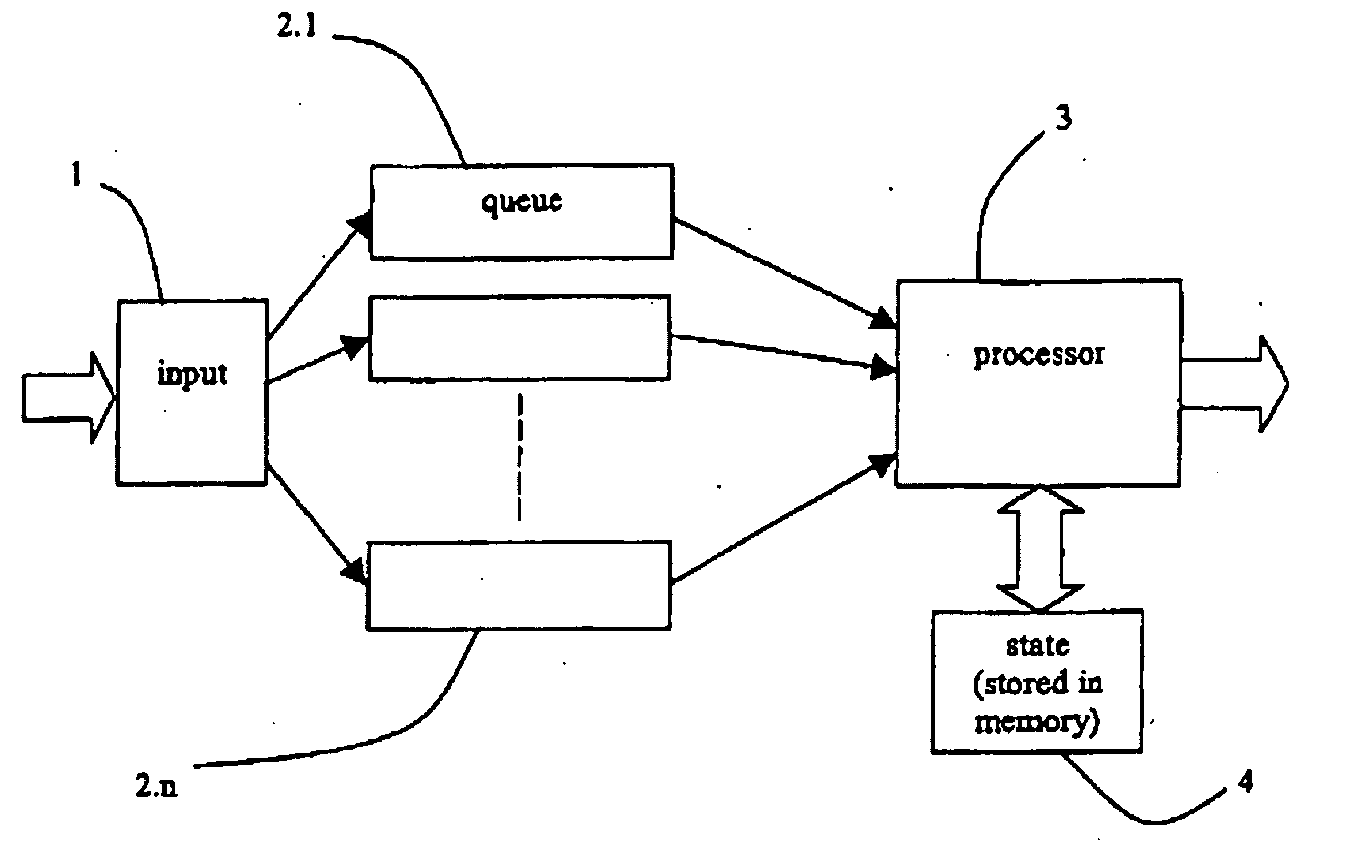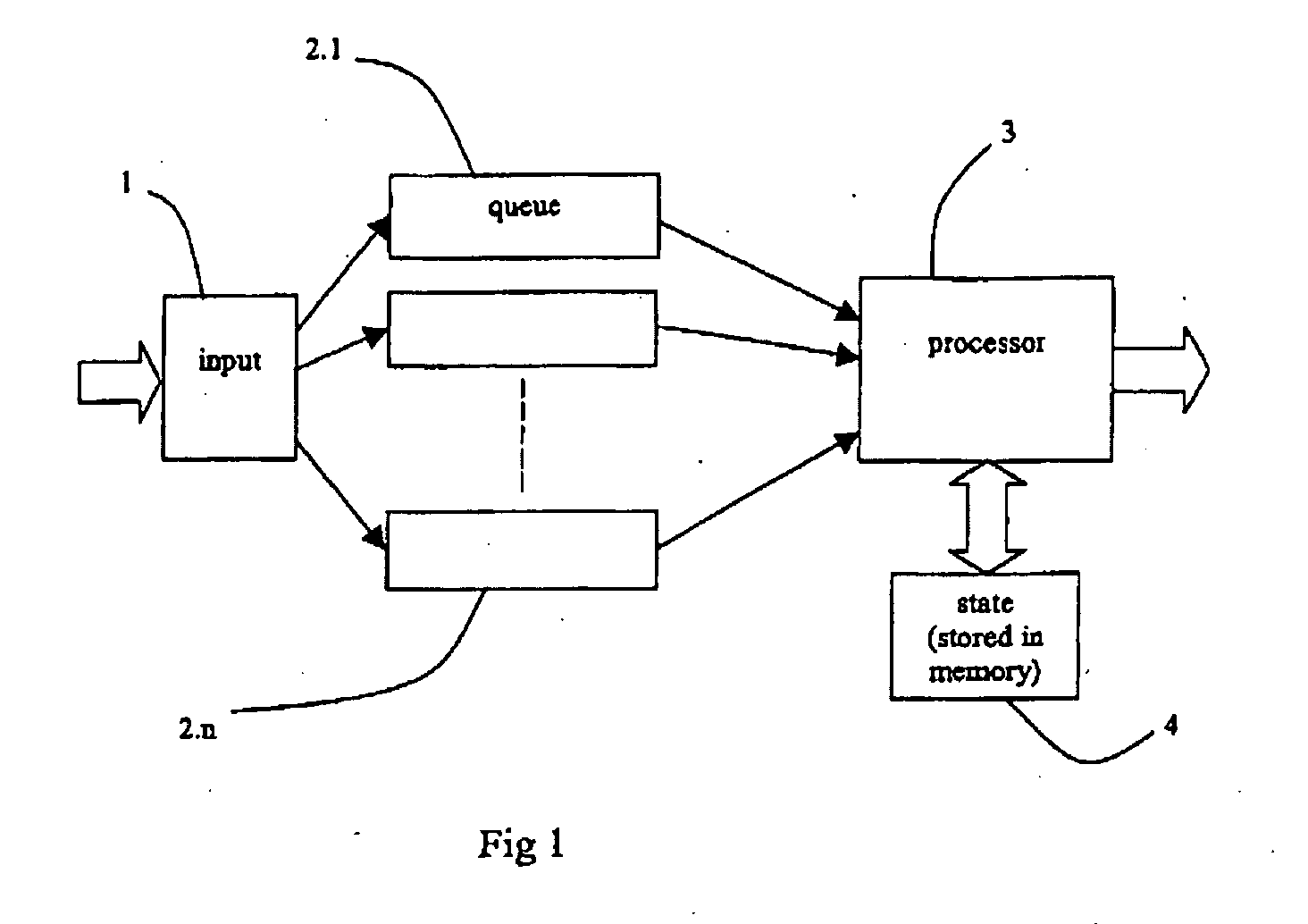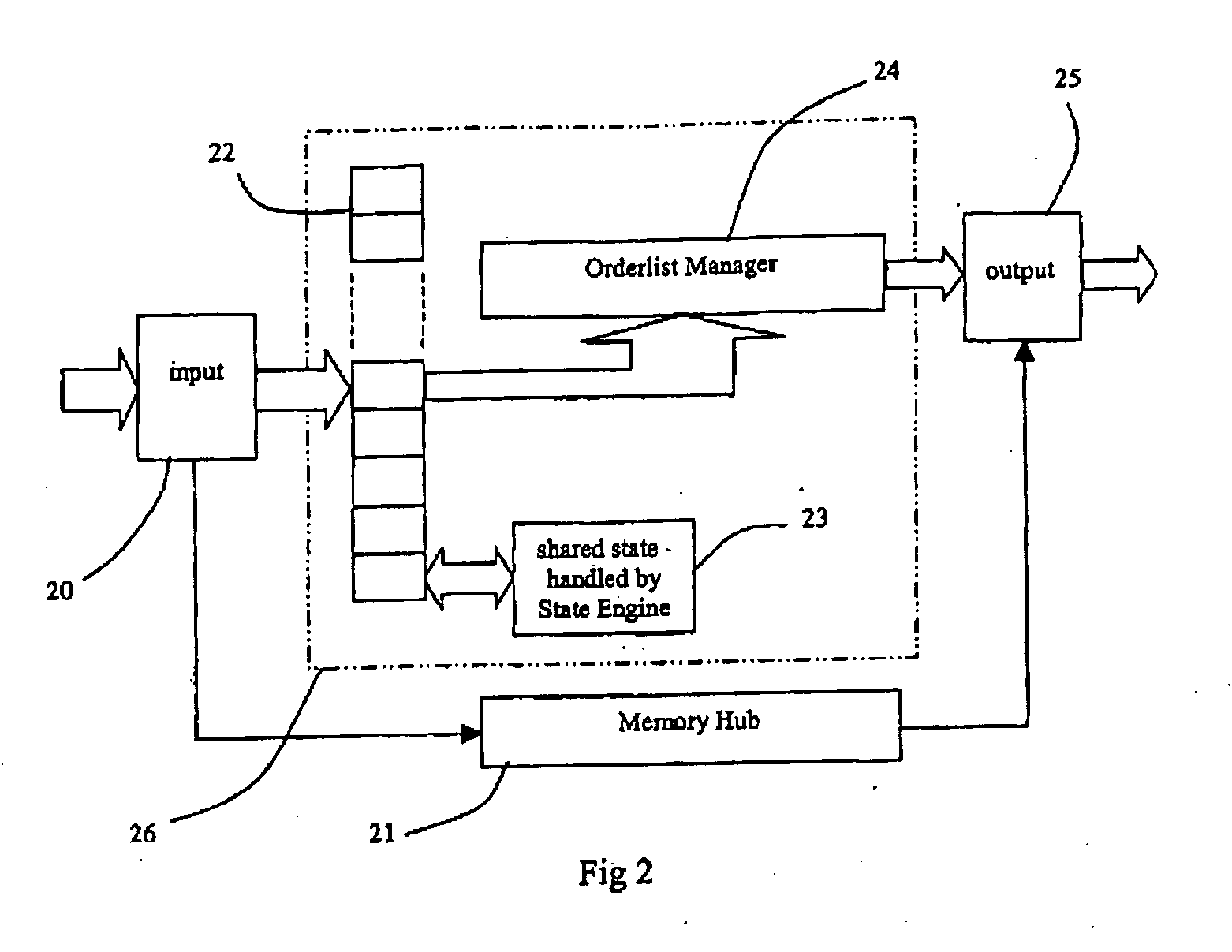Traffic management architecture
a technology of traffic management and architecture, applied in the field of traffic management, can solve the problems of inability to achieve, complex routing schemes, sheer volume of traffic management schemes,
- Summary
- Abstract
- Description
- Claims
- Application Information
AI Technical Summary
Benefits of technology
Problems solved by technology
Method used
Image
Examples
Embodiment Construction
[0034] The present invention turns current thinking on its head. FIG. 2 shows schematically the basic structure underlying the new strategy for effective traffic management. It could be described as a “think first, queue later™” strategy.
[0035] Packet data (traffic) received at the input 20 has the header portions stripped off and record portions of fixed length generated therefrom, containing information about the data, so that the record portions and the data portions can be handled separately. Thus, the data portions take the lower path and are stored in Memory Hub 21. At this stage, no attempt is made to organise the data portions in any particular order. However, the record portions are passed to a processor 22, such as a SIMD parallel processor, comprising one or more arrays of processor elements (PEs). Typically, each PE contains its own processor unit, local memory and register(s).
[0036] In contrast to the prior architecture outlined in FIG. 1, the present architecture sha...
PUM
 Login to View More
Login to View More Abstract
Description
Claims
Application Information
 Login to View More
Login to View More - R&D
- Intellectual Property
- Life Sciences
- Materials
- Tech Scout
- Unparalleled Data Quality
- Higher Quality Content
- 60% Fewer Hallucinations
Browse by: Latest US Patents, China's latest patents, Technical Efficacy Thesaurus, Application Domain, Technology Topic, Popular Technical Reports.
© 2025 PatSnap. All rights reserved.Legal|Privacy policy|Modern Slavery Act Transparency Statement|Sitemap|About US| Contact US: help@patsnap.com



